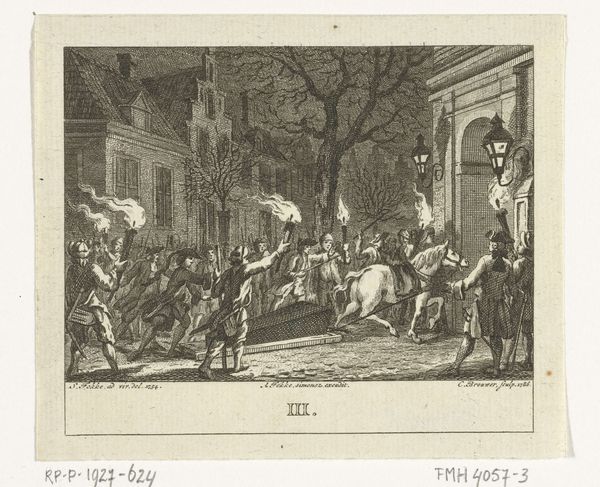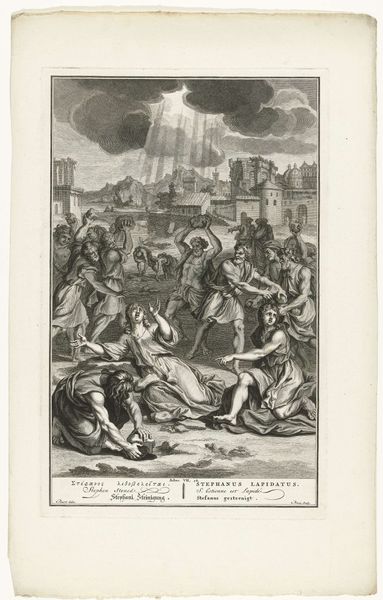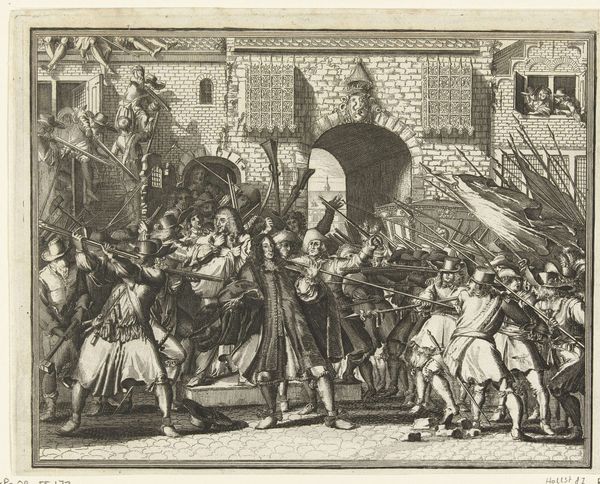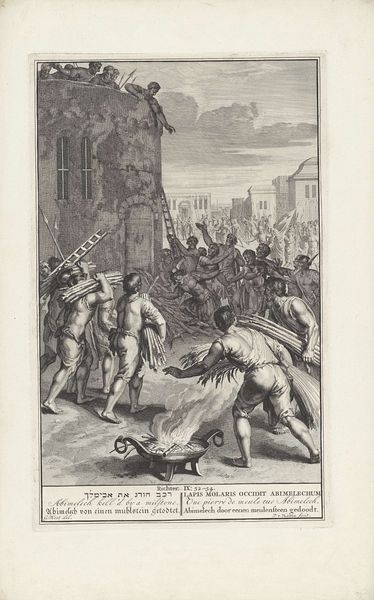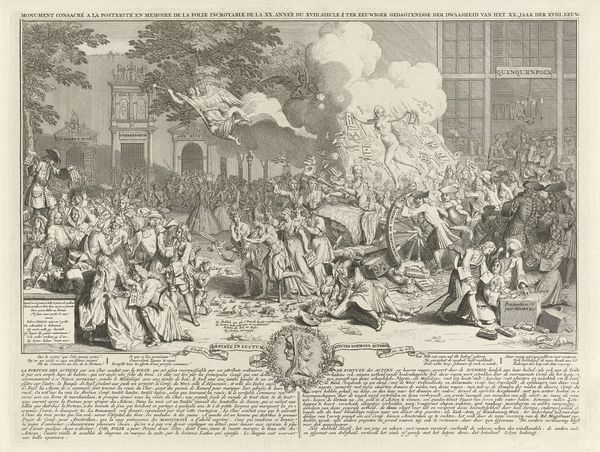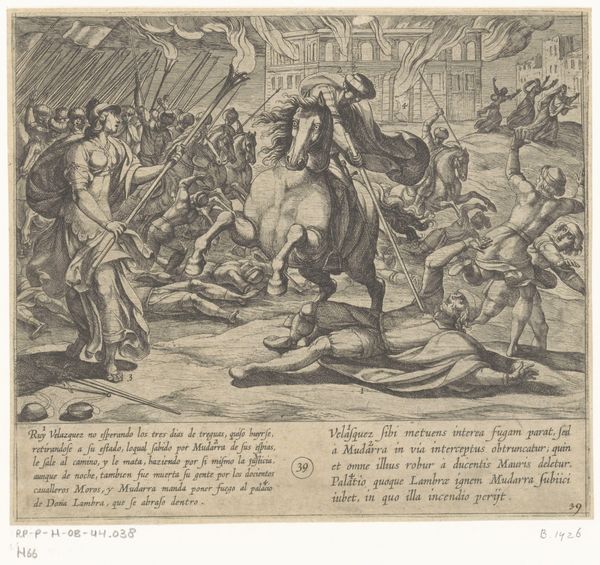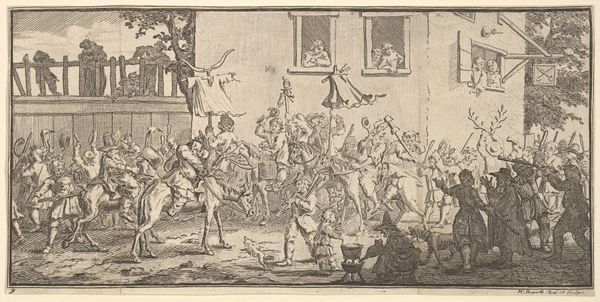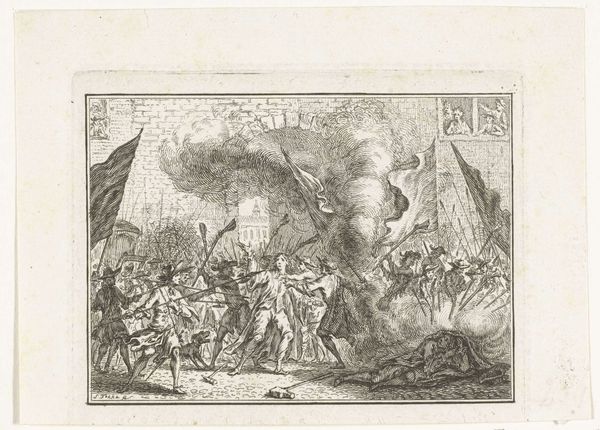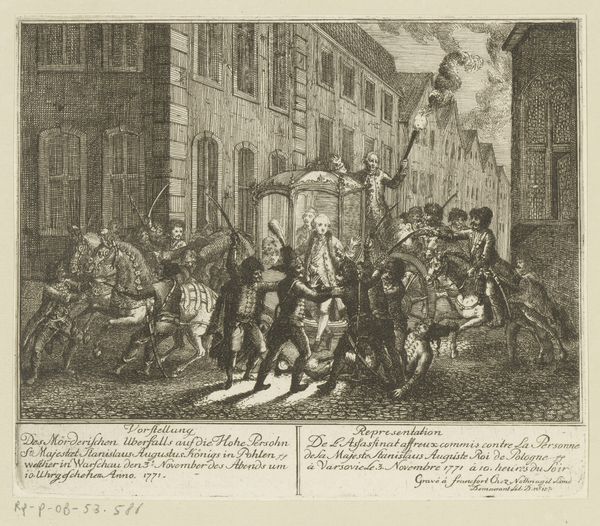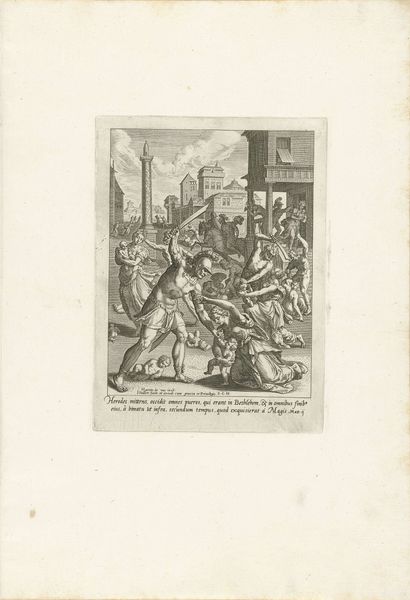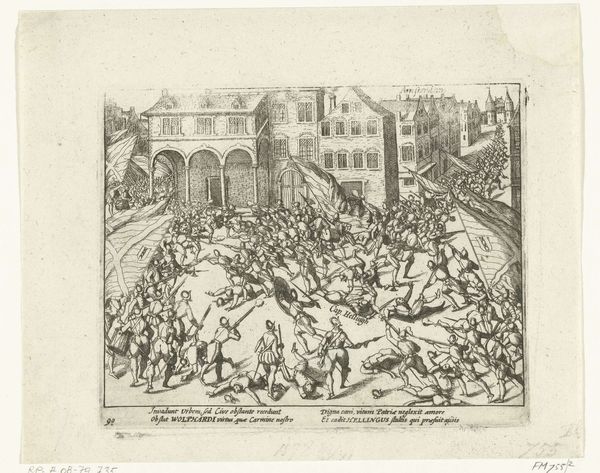
Opstand bij de begrafenis van Daniël Raap voor zijn sterfhuis te Amsterdam in 1754 1786
0:00
0:00
Dimensions: height 97 mm, width 114 mm
Copyright: Rijks Museum: Open Domain
Curator: What a captivating image! We’re looking at Cornelis Brouwer's engraving from 1786, titled "Opstand bij de begrafenis van Daniël Raap voor zijn sterfhuis te Amsterdam in 1754," housed right here at the Rijksmuseum. It depicts a rather tumultuous scene in Amsterdam. Editor: Yes, tumultuous is putting it mildly! It strikes me as raw, angry, and volatile. You can almost feel the heat rising off the torches in this grayscale image. There's so much unrest and violence; what sparked this? Curator: Brouwer’s work illustrates a very specific historical moment. Daniel Raap was a prominent Mennonite merchant. Riots broke out at his funeral because Mennonites weren't allowed to publicly display wealth, and his was incredibly ostentatious, defying those sumptuary laws. Editor: Ah, so it’s a direct challenge to social norms and legal structures of the time! It makes sense why there's such palpable energy. This image embodies the rage of those disenfranchised or restricted. I'm particularly struck by the people throwing objects, like paper. Curator: These rioters appear to target Raap's house itself. You are spot-on; this engraving does invite us to think about the power dynamics present and challenged within 18th-century Dutch society, particularly considering religious tolerance. How the act of throwing objects takes on political significance when the existing structures impose limitations and inequalities based on religious identity. Editor: Exactly. I find it equally interesting that an engraving—a printed, widely distributed image—was chosen to record this event. It amplifies the message, doesn’t it? Almost like a form of visual activism. This really prompts me to reflect on representation, class and resistance then and now. It raises complex ideas about what and who deserves remembrance. Curator: Precisely! The print format makes this unrest more widely accessible, furthering public dialogue around societal limitations and class, allowing discussions to propagate amongst a bigger audience. An incredibly effective way to memorialize dissent, don’t you think? Editor: Absolutely, something about this medium really suits the subject matter here, even now it can incite emotions related to rebellion. Overall, it definitely gives one much to think about concerning power and representation.
Comments
No comments
Be the first to comment and join the conversation on the ultimate creative platform.

